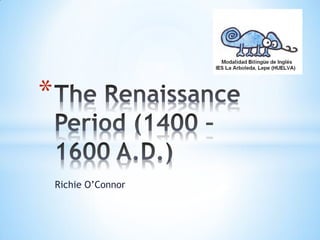The Renaissance period saw developments in music composition and instrumentation. Composers gained more artistic freedom and styles such as polyphonic music became prominent. Sacred music like masses and motets remained important, while secular forms like the chanson and madrigal also grew in popularity. A variety of instruments were used, including strings, woodwinds, brass and keyboards. Ensemble music featured small chamber groups rather than large orchestras. Dance music remained an important genre.

































